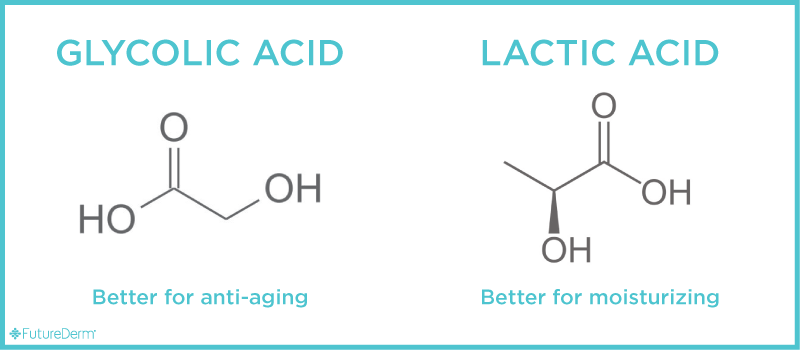Preparation
Glycolic acid can be synthesized in various ways. The predominant approaches uses a catalyzed reaction of formaldehyde with synthesis gas (carbonylation of formaldehyde), for its low cost.
It is also prepared by the reaction of chloroacetic acid with sodium hydroxide followed by re-acidification.
Other methods, not noticeably in use, include hydrogenation of oxalic acid, and hydrolysis of the cyanohydrin derived from formaldehyde. Some of today's glycolic acids are formic acid-free. Glycolic acid can be isolated from natural sources, such as sugarcane, sugar beets, pineapple, cantaloupe and unripe grapes.
Glycolic acid can also be prepared using an enzymatic biochemical process that may require less energy.
Properties
Glycolic acid is slightly stronger than acetic acid due to the electron-withdrawing power of the terminal hydroxyl group. The carboxylate group can coordinate to metal ions forming coordination complexes. Of particular note are the complexes with Pb2+ and Cu2+ which are significantly stronger than complexes with other carboxylic acids. This indicates that the hydroxyl group is involved in complex formation, possibly with the loss of its proton.
Skin care
Due to its excellent capability to penetrate skin, glycolic acid finds applications in skin care products, most often as a chemical peel performed by a dermatologist in concentrations of 20 to 70% or at-home kits in lower concentrations between 10 and 20%. In addition to concentration, pH also plays a large part in determining the potency of glycolic acid in solution.
Physician-strength peels can have a pH as low as 0.6 (strong enough to completely keratolyze the epidermis), while acidities for home peels can be as high as 2.5.
Once applied, glycolic acid reacts with the upper layer of the epidermis, weakening the binding properties of the lipids that hold the dead skin cells together. This allows the stratum corneum to be exfoliated, exposing live skin cells. Highly purified grades of glycolic acid are commercially available for personal care applications.
Safety
Glycolic acid is a strong irritant depending on pH. Like ethylene glycol, it is metabolized to oxalic acid, which could make it dangerous if ingested.
Glycolic acid Alpha-hydroxyacetic acid Hydroxyethanoic acid C2H4O3 / HOCH2COOH Molecular mass: 76.1 ICSC # 1537 | CAS # 79-14-1 RTECS # MC5250000 UN # 3261 October 28, 2004 Validated |
TYPES OF HAZARD/ EXPOSURE | ACUTE HAZARDS/ SYMPTOMS | PREVENTION |
FIRST AID/
|
| FIRE | Combustible. | NO open flames. | Powder, water spray, foam, carbon dioxide. |
| EXPLOSION | |||
| EXPOSURE | |||
| •INHALATION | Cough. Shortness of breath. Sore throat. | Avoid inhalation of fine dust and mist. | Half-upright position. Fresh air, rest. Refer for medical attention. |
| •SKIN | Redness. Pain. Serious skin burns. | Protective gloves. | First rinse with plenty of water, then remove contaminated clothes and rinse again. |
| •EYES | Redness. Pain. Blurred vision. Severe deep burns. | Safety goggles, or eye protection in combination with breathing protection. | First rinse with plenty of water for several minutes (remove contact lenses if easily possible), then take to a doctor. |
| •INGESTION | Abdominal pain. Burning sensation. Shock or collapse. | Do not eat, drink, or smoke during work. | Do NOT induce vomiting. Give plenty of water to drink. Refer for medical attention. |
SPILLAGE DISPOSAL | STORAGE | PACKAGING & LABELLING | ||
| Chemical protection suit including self-contained breathing apparatus. Sweep spilled substance into covered containers. | Separated from strong oxidants, metals, sulfides, cyanides strong bases food and feedstuffs . Dry. | Do not transport with food and feedstuffs. UN Hazard Class: 8 UN Packing Group: II | ||
| ||||

No comments:
Post a Comment